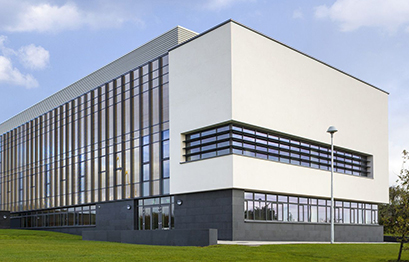-

What is steel pipe fabrication?
Custom Steel Pipe Tube Fabrication Manufacturer Steel pipe fabrication is a crucial process in the construction and manufacturing ...
-

The Advantages of CNC Processing in Modern Manufacturing
Custom Cnc Brass Cutting Processing Company In today’s manufacturing landscape, precision, efficiency, and adaptability are essent...
-

CNC Processing: The Backbone of Modern Manufacturing Excellence
Custom CNC Processing Metal Machining Factory In an era where precision and efficiency define industrial progress, CNC (Computer N...

As OEM/ODM CNC metal machining suppliers and CNC processing factory, we are mainly engaged in custom sheet metal machining, It has hardware stamping equipment, dozens of 16-250T punch machines and 100-315 ton presses, a large gantry processing center, automatic pipe cutting machines, and automatic pipe shrinking machines. Pipe bending machines and OTC welding manipulators can undertake the stamping, forming, and finishing of various metal parts, as well as the processing, production, and welding of pipe products. We can provide customers with product design consultation, proofing, mold opening, production, and other services.
CNC Metal Machining Industry Knowledge Extension
CNC Metal Machining, CNC Processing, and Sheet Metal Machining are integral aspects of modern manufacturing, each contributing uniquely to the precision and efficiency of producing metal components.
CNC Metal Machining
CNC Metal Machining involves the use of Computer Numerical Control (CNC) machines to manipulate metal into precise shapes and sizes. This process is pivotal in various industries, including aerospace, automotive, and medical device manufacturing. CNC machines are programmed with exact instructions to cut, drill, or mill metal workpieces. The process starts with a digital design, often created using CAD (Computer-Aided Design) software. This design is then converted into a set of instructions that the CNC machine follows to execute the machining operations. The accuracy of CNC Metal Machining ensures that each component meets stringent specifications, which is crucial for maintaining quality and functionality in finished products. One of the significant advantages of CNC Metal Machining is its ability to produce complex geometries that would be challenging or impossible to achieve using manual methods. This capability allows manufacturers to innovate and create intricate designs that enhance the performance and aesthetic appeal of their products.
CNC Processing
CNC Processing is a broader term that encompasses various machining operations controlled by computer systems. It includes not only metal machining but also the processing of other materials such as plastics, composites, and wood. The versatility of CNC Processing makes it indispensable in modern manufacturing, where precision and efficiency are paramount. CNC Processing begins with the creation of a digital model, which is translated into G-code or other machine-readable formats. The CNC machine then follows these instructions to perform tasks such as cutting, shaping, and assembling parts. This automation reduces the likelihood of human error and ensures consistency across large production runs. Another key benefit of CNC Processing is its ability to operate continuously with small supervision, thereby increasing productivity. By integrating CNC Processing into their operations, manufacturers can achieve higher throughput and reduce production advance times, which is essential in today's fast-paced market environment.
Sheet Metal Machining
Sheet Metal Machining specifically refers to the process of cutting, bending, and shaping metal sheets into desired forms. This technique is widely used in the production of enclosures, brackets, chassis, and other components found in a multitude of products from electronics to appliances and vehicles. The process starts with the selection of appropriate sheet metal, which is then subjected to various machining operations. These operations include laser cutting, punching, and bending, each designed to manipulate the metal sheet precisely. Laser cutting, for example, utilizes a high-powered laser beam to cut through metal with high precision, allowing for intricate shapes and designs. Punching involves using a press to create holes or shapes in the metal sheet while bending uses a press brake to fold the metal into angles. Sheet Metal Machining is known for its cost-effectiveness and efficiency, especially in producing large quantities of parts. It also offers flexibility in design, allowing manufacturers to create customized solutions tailored to specific requirements. The ability to quickly prototype and iterate designs using sheet metal machining is particularly valuable in industries that demand rapid product development cycles.
In summary, CNC Metal Machining, CNC Processing, and Sheet Metal Machining are critical components of the manufacturing sector. Each of these processes offers unique advantages that help manufacturers produce high-quality, precise components efficiently. CNC Metal Machining excels in producing complex metal parts with high accuracy, CNC Processing offers versatility across various materials and machining operations, and Sheet Metal Machining provides a cost-effective solution for creating metal parts in large volumes. By leveraging these machining techniques, manufacturers can meet the rigorous demands of modern production and deliver innovative products to the market.


 English
English русский
русский Español
Español







